Notice: Refer to Fastener Notice in the Preface section.
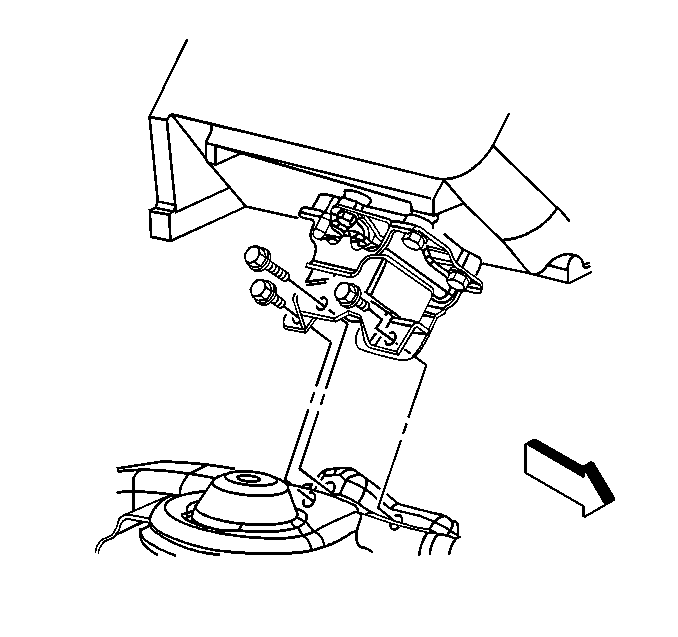
- Install the engine.
- Install the engine mount to engine mount bracket bolts.
Tighten
Tighten the bolts to 65 N·m (48 lb ft).
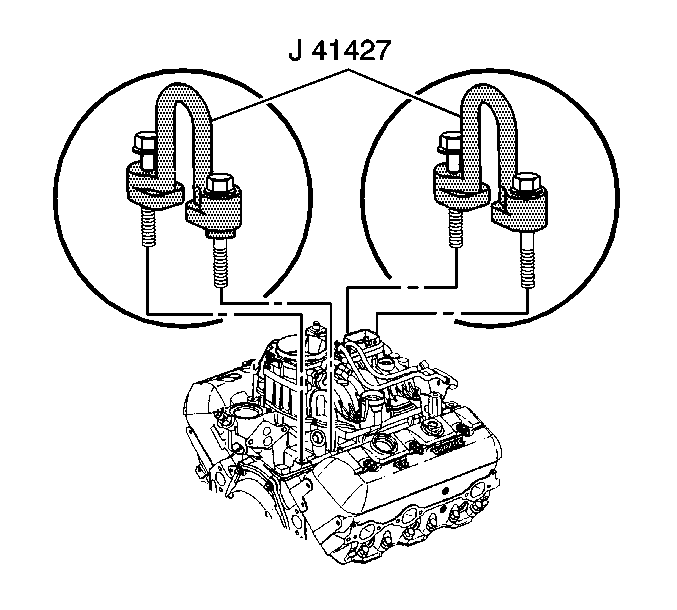
- Remove the lifting devise and the
J 41427
.
- Apply threadlock to the threads of the intake manifold lower bolts.
- Install the intake manifold bolts. Refer to
Adhesives, Fluids, Lubricants, and Sealers
for the correct part number.
Tighten
- Tighten the bolts a first pass to 3 N·m (27 lb in).
- Tighten the bolts a second pass to 12 N·m (106 lb in).
- Tighten the bolts a final pass to 15 N·m (11 lb ft).
- Install one transmission bolt until snug.
- Remove the support jack from under the transmission.
- Install the thermostat and water outlet. Refer to
Engine Coolant Thermostat Replacement
.
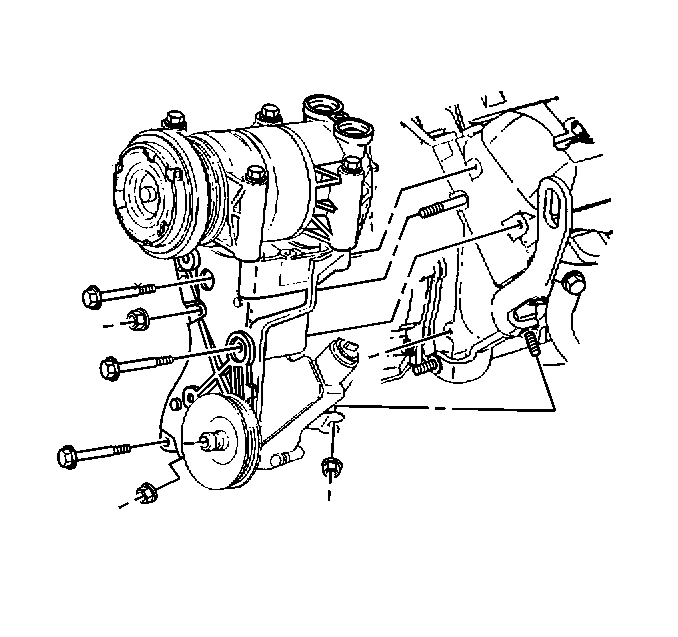
- Slide the P/S pump bracket onto the stud.
- Install the bolts and the nut for the P/S pump bracket.
- Install the P/S pump rear bracket front nut.
- Tighten the P/S pump rear bracket nut.
Tighten
Tighten the bolts and nuts to 41 N·m (30 lb ft).
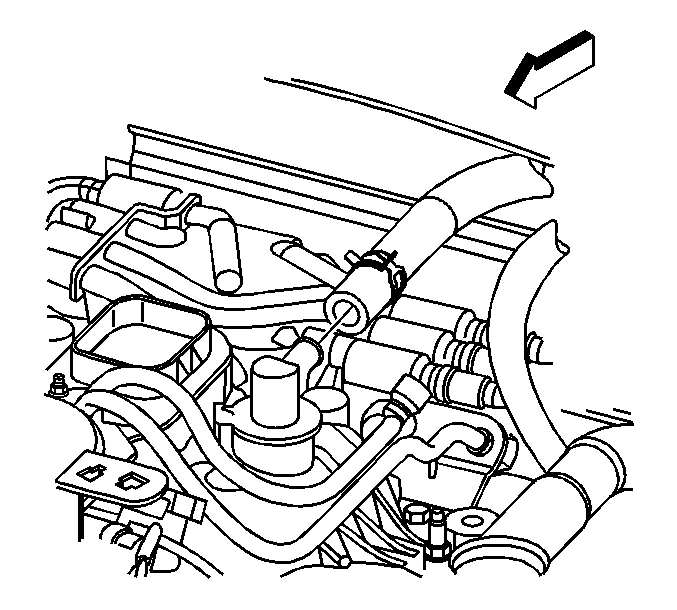
- Connect the power brake booster vacuum hose to the vacuum fitting.
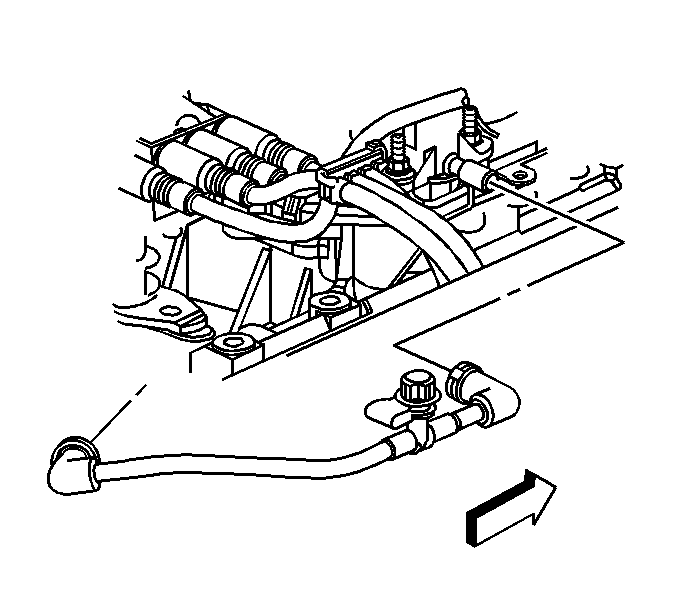
- Connect the EVAP canister harness to the purge solenoid valve.
- Install the distributor cap. Refer to
Distributor Replacement
.
- Install the heater hoses. Refer to
Heater Inlet Hose Replacement
and
Heater Outlet Hose Replacement
.

- Position the engine wiring harness.
- Install the stud holding the engine wiring harness bracket.
- Install the engine wiring harness rear bracket nut at the EVAP canister purge solenoid valve.
Tighten
Tighten the nut to 9 N·m (80 lb in).
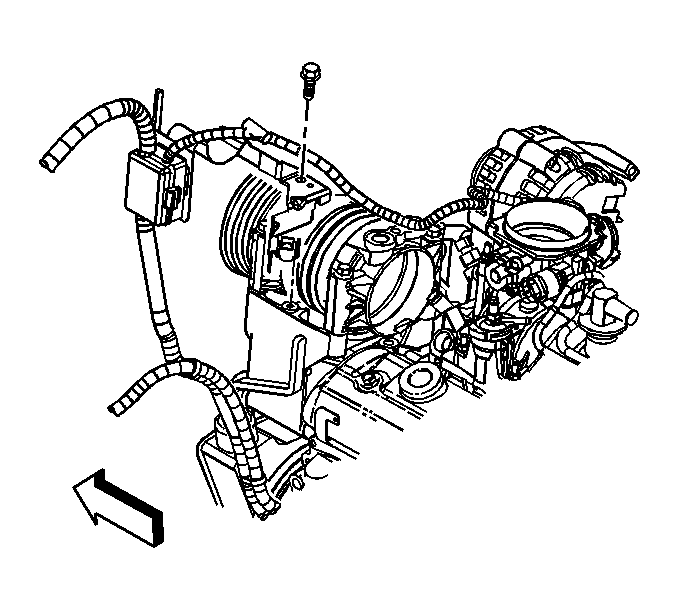
- Position the bracket and wiring harness.
- Install the junction block bracket bolt.
Tighten
Tighten the bolt to 25 N·m (18 lb ft).

- Install the engine wiring harness bracket to the studs.
- Install the engine wiring harness bracket nuts.
Tighten
Tighten the nuts to 12 N·m (106 lb in).

- Position the harness ground (4) and ground strap (5).
- Install the harness ground bolt.
Tighten
Tighten the bolt to 16 N·m (12 lb ft).
- Connect the following electrical connectors:
| • | Fuel pump/oil pressure sensor (3) |

- Install the engine wiring harness ground nut and ground wire (4) to the rear of
the right cylinder head.
Tighten
Tighten the nut to 16 N·m (12 lb ft).
- Connect the following electrical connectors:
| • | Ignition coil driver (2) |
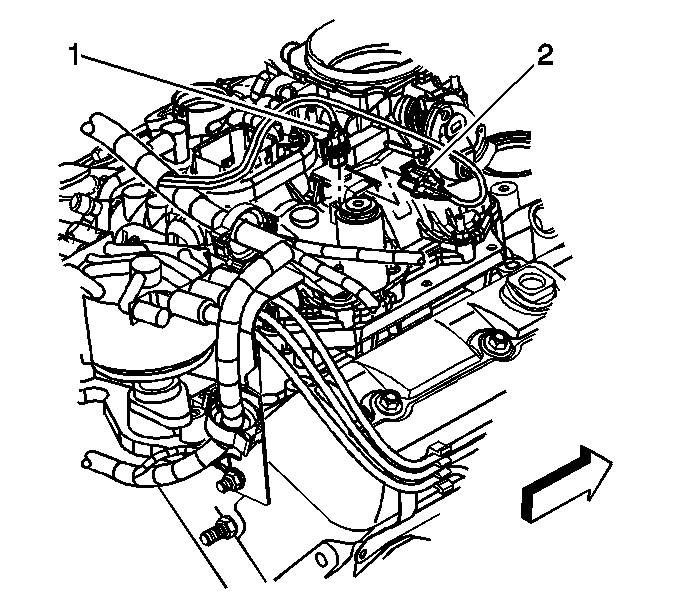
- Connect the following electrical connectors:
| • | EVAP canister purge solenoid valve (1) |
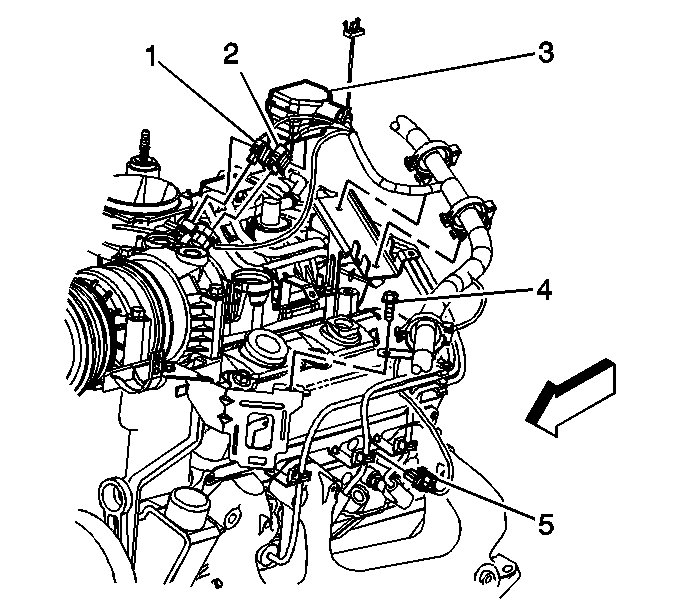
- Install the engine wiring harness clip bolt (4).
Tighten
Tighten the bolt to 9 N·m (80 lb in).
- Connect the following electrical connectors:
| • | Control port injector module (3) |

- Install the positive cable and nut to the generator.
Tighten
Tighten the nut to 18 N·m (13 lb ft).
- Connect the following electrical connectors:
| • | A/C pressure switch (4), if equipped |
| • | A/C compressor clutch (1), if equipped |
- If equipped, install the A/C hoses. Refer to
Discharge Hose Replacement
and
Suction Hose Replacement
.
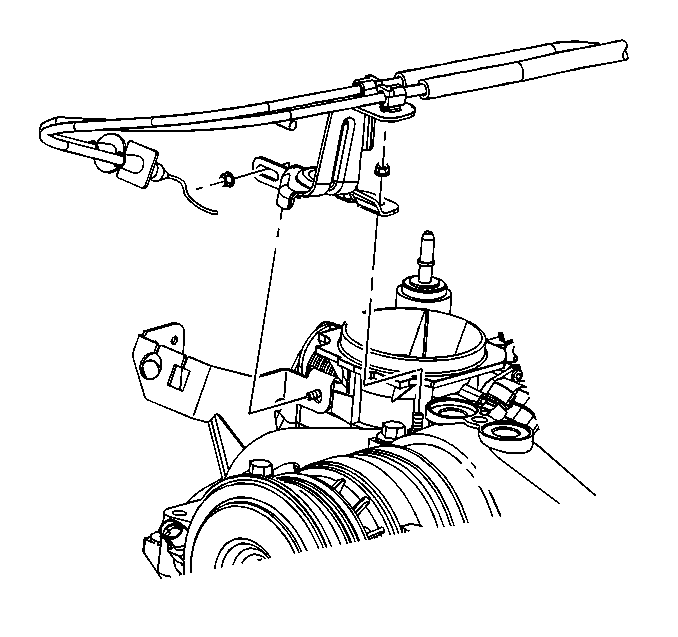
- Position the bracket and cables.
- Install the accelerator control cable bracket with the cables attached, to the throttle body.
- Install the accelerator control cable bracket nuts.
Tighten
Tighten the nuts to 9 N·m (80 lb in).
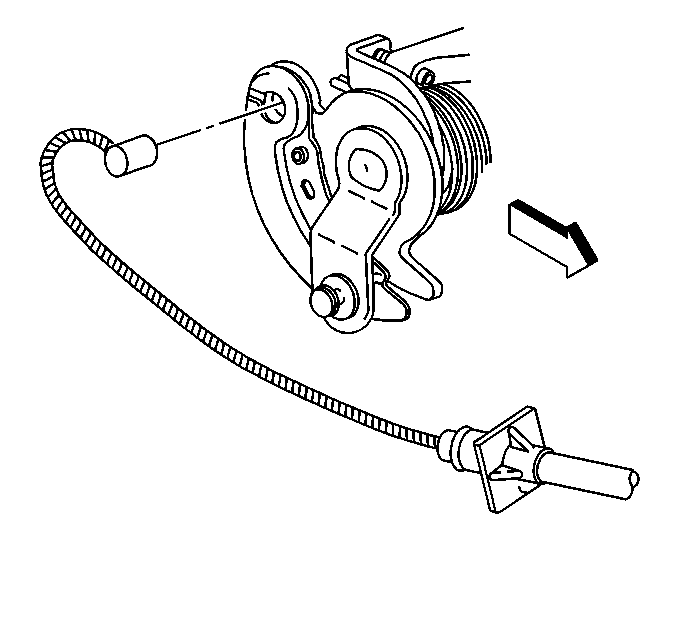
- Install the accelerator cable to the throttle body lever.
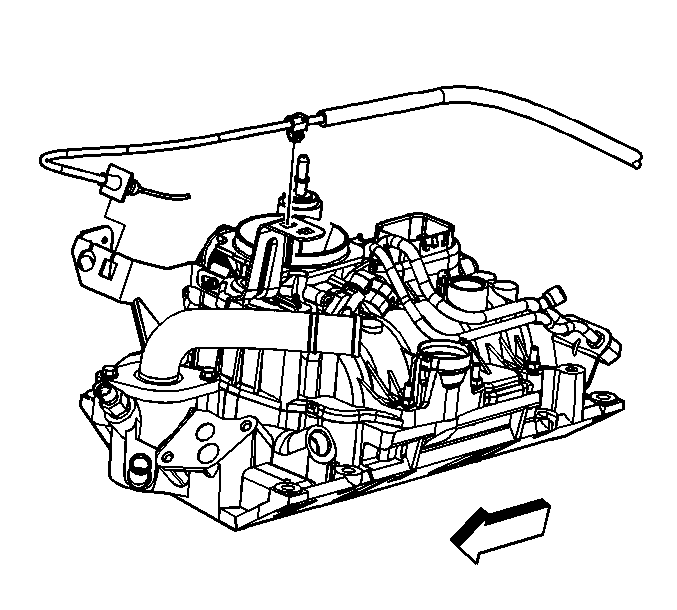
Caution: In order to avoid possible injury or vehicle damage, always replace
the accelerator control cable with a NEW cable whenever you remove the engine
from the vehicle.
In order to avoid cruise control cable damage, position the cable out
of the way while you remove or install the engine. Do not pry
or lean against the cruise control cable and do not kink the cable. You must
replace a damaged cable.
- Install the accelerator cable to the accelerator control cable bracket.
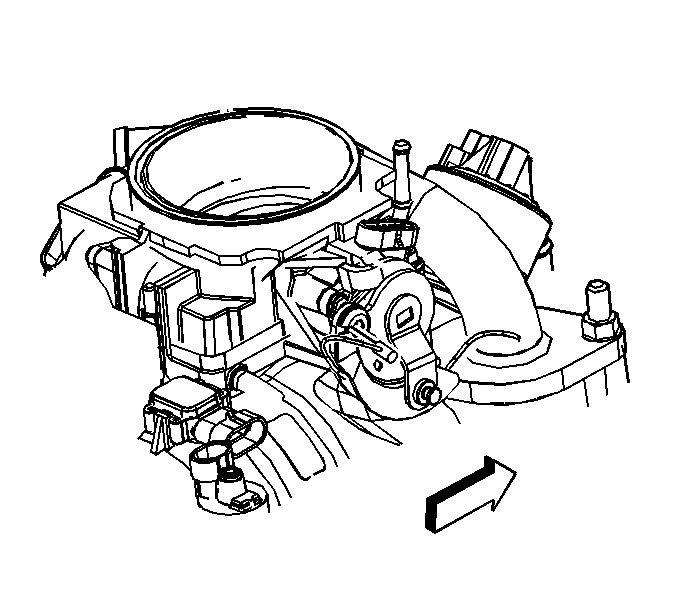
- Install the accelerator cable to the throttle body lever.
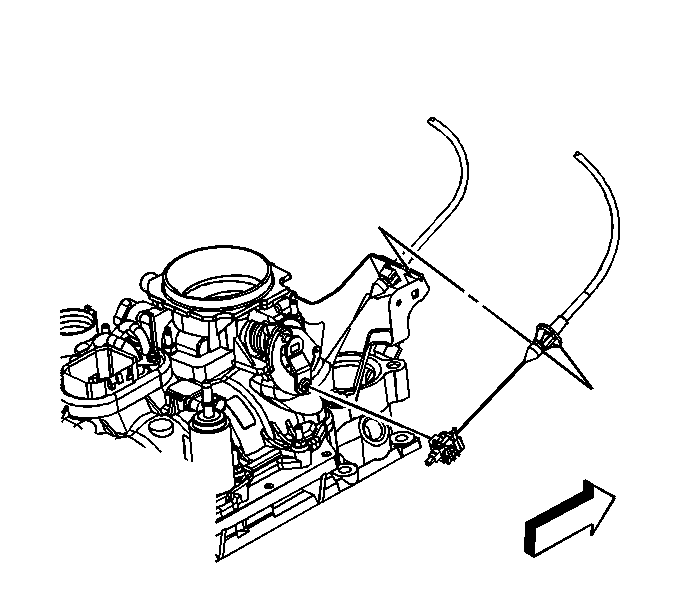
- If equipped, install the cruise control cable to the accelerator control cable
bracket.
- If equipped, connect the cruise control cable to the throttle body lever.
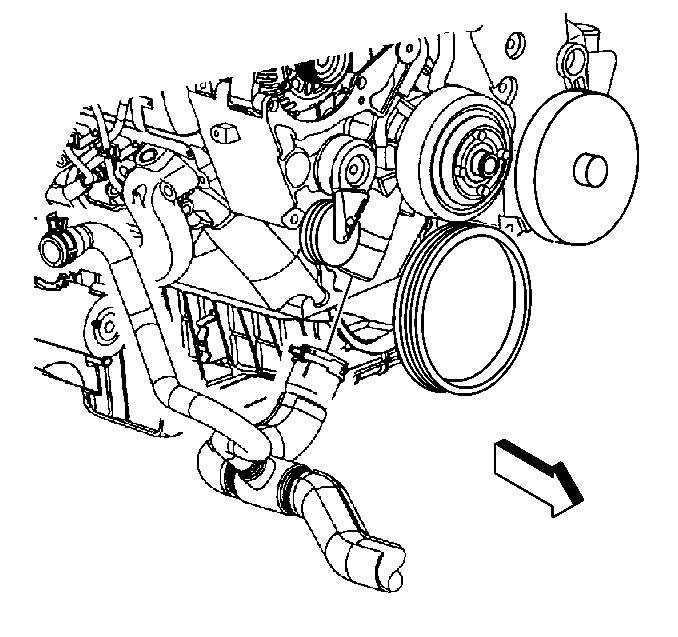
- Install the radiator outlet hose to the water pump.
- Install the radiator outlet hose to the surge tank.
- Position the radiator outlet hose clamps.
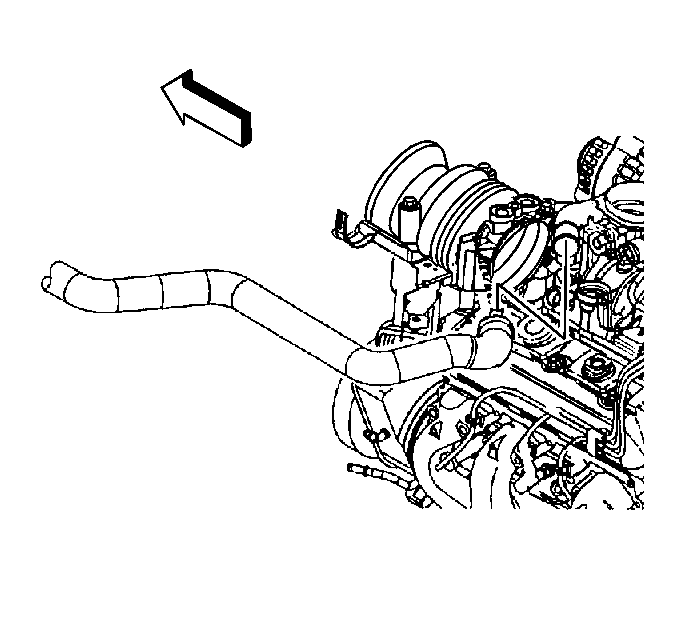
- Install the radiator inlet hose to the thermostat housing.
- Position the radiator inlet hose clamp.
- Install the drive belt. Refer to
Drive Belt Replacement
.
- Install the lower fan shroud. Refer to
Engine Coolant Fan Lower Shroud Replacement
.
- Install the fuel pipes/hoses. Refer to
Fuel Hose/Pipes Replacement - Engine Compartment
.
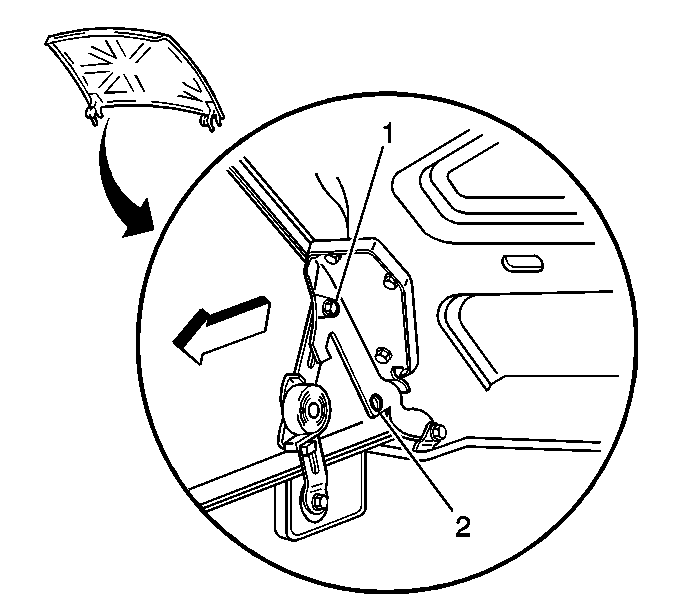
- Remove the hood hinge bolt from the service position (2).
- Lower the hood to the normal position.
- Install the hood hinge bolts.
Tighten
Tighten the bolts to 25 N·m (18 lb ft).
- Raise the vehicle.
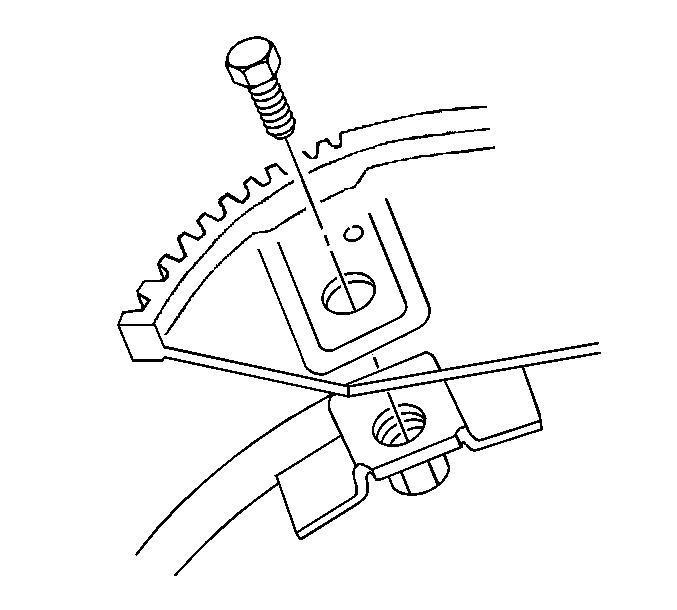
- Install the transmission bolts.
Tighten
Tighten the bolts to 50 N·m (37 lb ft).
- If equipped, install the torque converter bolts.
Tighten
Tighten the bolts to 63 N·m (47 lb ft).
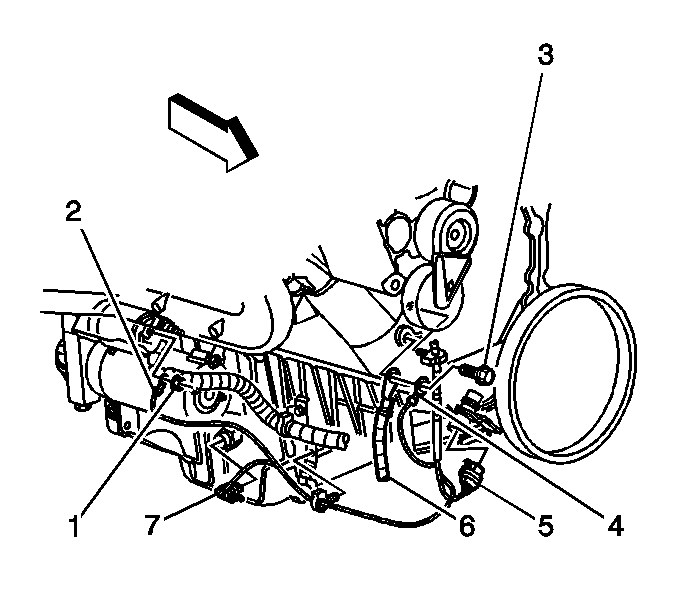
- Install the ground bolt (3) holding the negative battery cable (6) and ground cable (4) to the engine.
- Connect the CKP sensor electrical connector (5) and install the harness to the retainer clip.
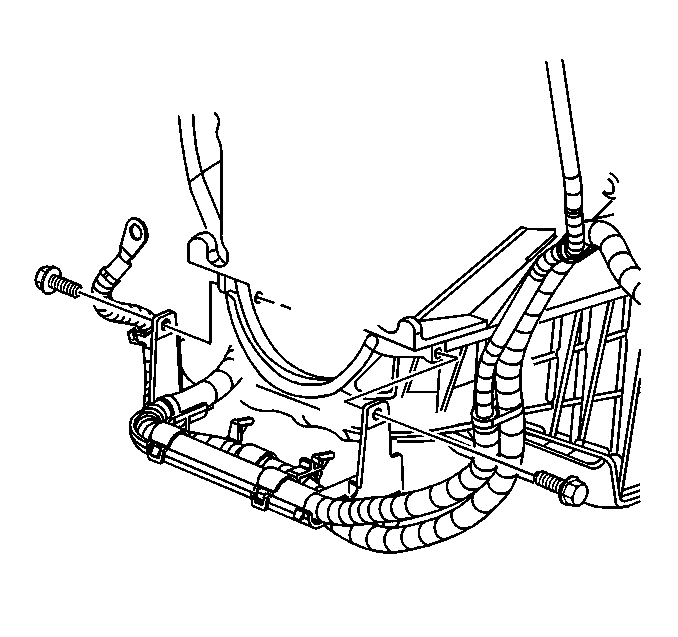
- Install the battery cable bracket bolts.
Tighten
Tighten the bolts to 12 N·m (106 lb in).
- Install the catalytic converter. Refer to
Catalytic Converter Replacement
.
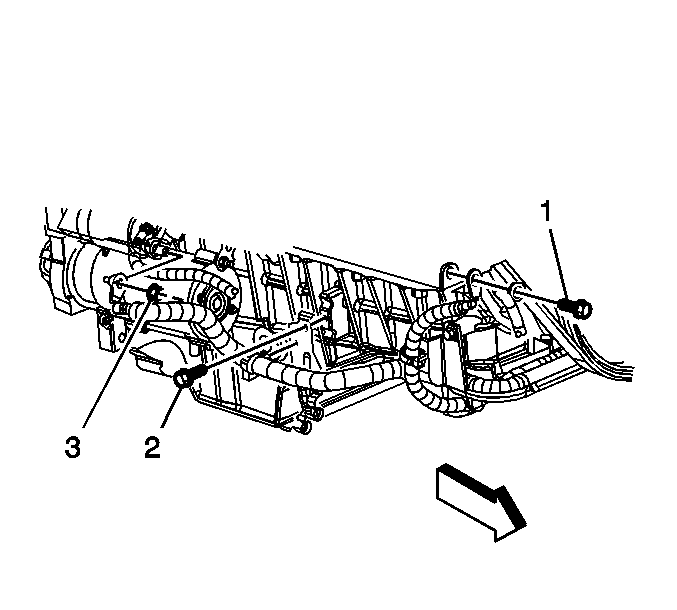
- Install the positive battery cable clip bolt (2).
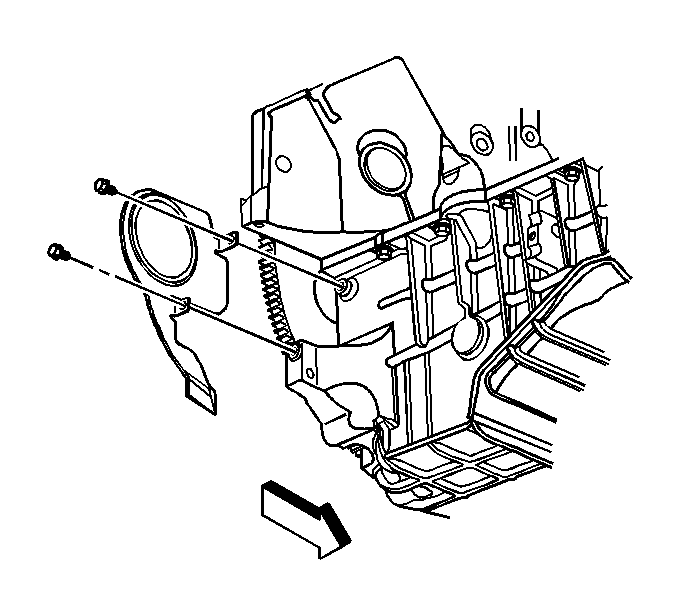
- Install the transmission cover.
Tighten
Tighten the bolts to 12 N·m (106 lb in).
- Install the starter. Refer to
Starter Motor Replacement
.
- If equipped, install the engine shield. Refer to
Engine Protection Shield Replacement
.
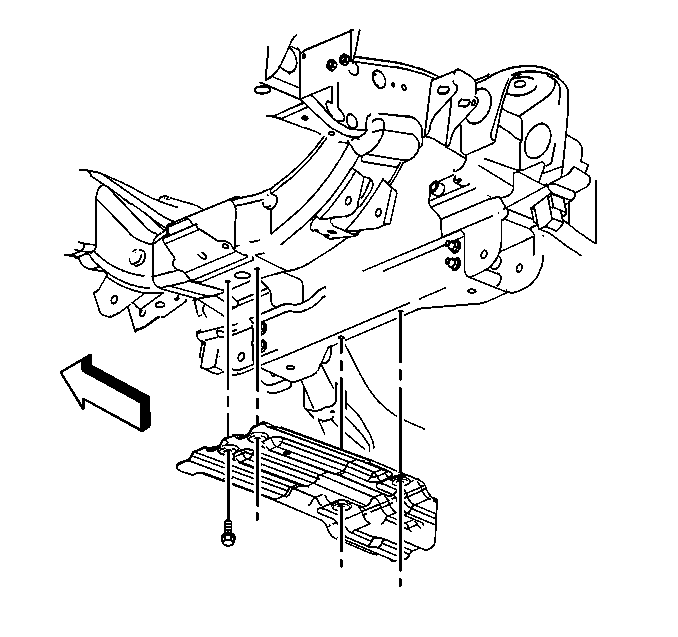
- If equipped, install the oil pan skid plate and bolts.
Tighten
Tighten the bolts to 20 N·m (15 lb ft).
- Lower the vehicle.
- Connect the negative battery cable. Refer to
Battery Negative Cable Disconnection and Connection
.
- Perform the engine prelube procedure. Refer to
Engine Prelubing
.
- Add engine oil supplement to the engine oil. Refer to
Adhesives, Fluids, Lubricants, and Sealers
for the correct part number.
- Fill the cooling system. Refer to
Cooling System Draining and Filling
.
- If equipped, bleed the hydraulic clutch. Refer to
Hydraulic Clutch Bleeding
.
- Recharge the A/C system. Refer to
Refrigerant Recovery and Recharging
.
Important: After an overhaul, the engine should be tested. Use the following procedure after the engine is installed in the vehicle.
- Disable the ignition system.
- Crank the engine several times. Listen for any unusual noises or evidence that parts are binding.
- Start the engine and listen for unusual noises.
- Check the oil pressure gauge or light and confirm that the engine has acceptable oil pressure.
- If necessary, install an oil pressure gage and measure the oil pressure.
- Run the engine speed at about 1,000 RPM until the engine has reached normal operating temperature.
- Listen for sticking valve lifters, or other unusual noises.
- Inspect for fuel, oil, and/or coolant leaks while the engine is running.
- Verify that the distributor is properly positioned.
- Perform a final inspection for the proper oil and coolant levels.
- Close the hood.






















































